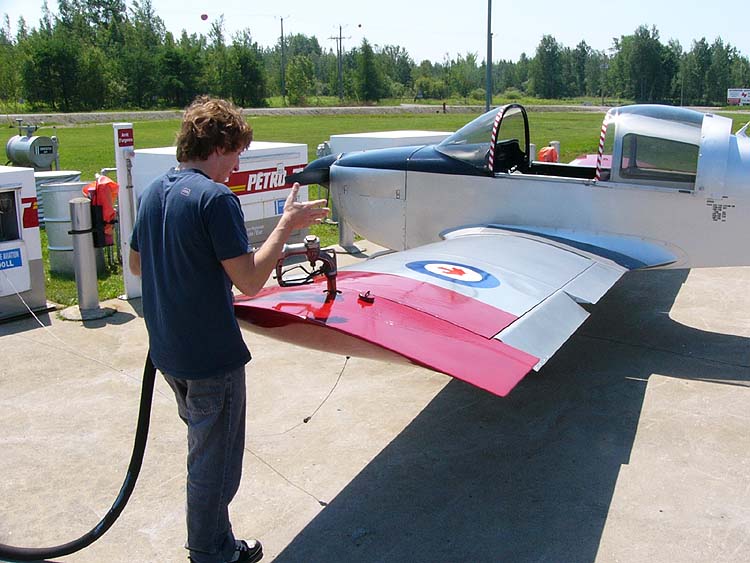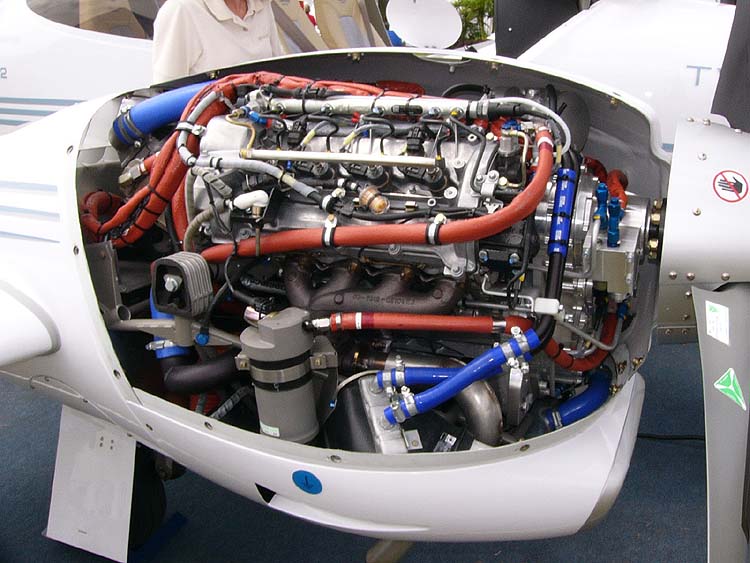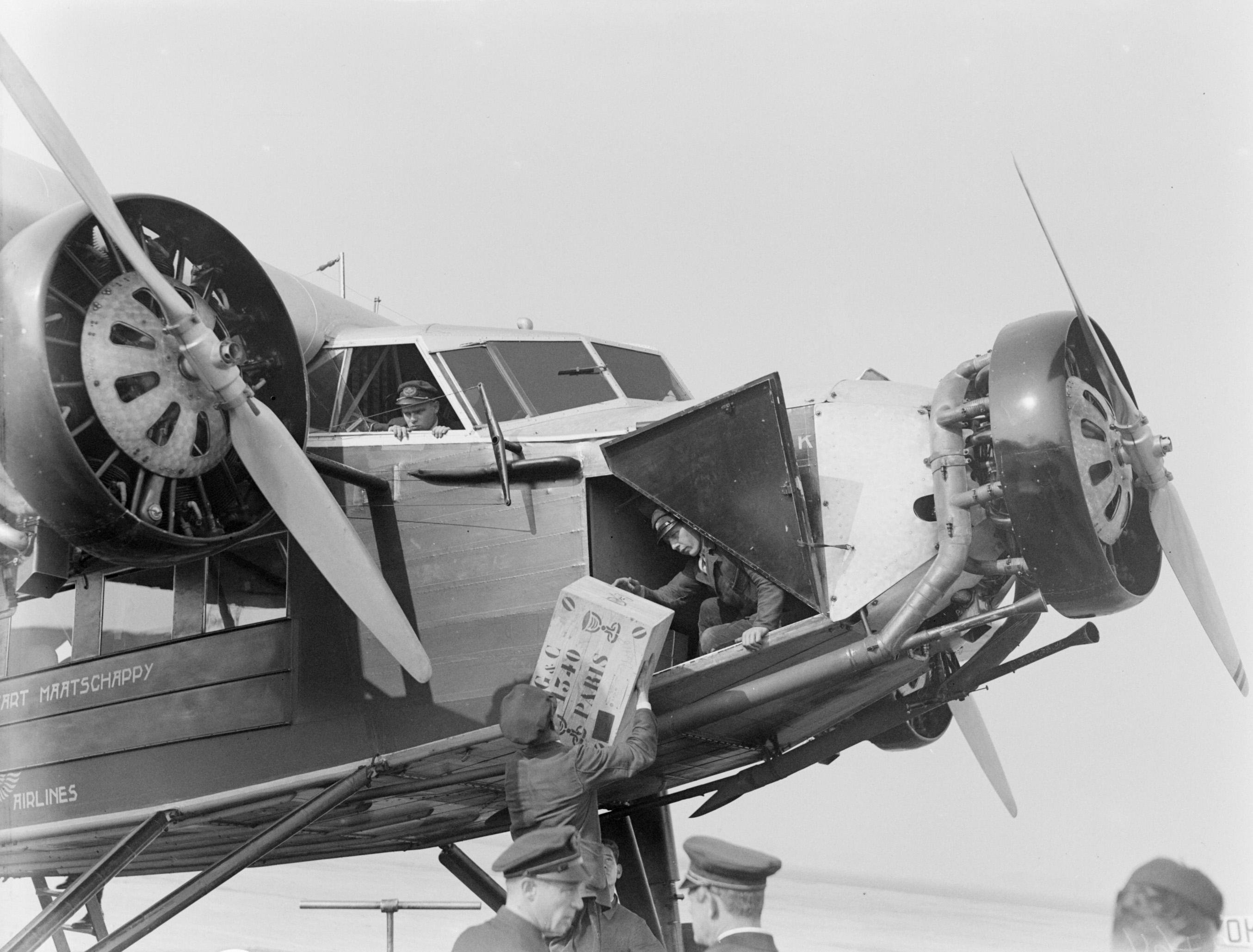|
Avgas
Avgas (aviation gasoline, also known as aviation spirit in the UK) is an aviation fuel used in aircraft with spark-ignited internal combustion engines. ''Avgas'' is distinguished from conventional gasoline (petrol) used in motor vehicles, which is termed ''mogas'' (motor gasoline) in an aviation context. Unlike motor gasoline, which has been formulated since the 1970s to allow the use of platinum-content catalytic converters for pollution reduction, the most commonly used grades of avgas still contain tetraethyllead (TEL), a toxic substance used to prevent engine knocking (premature detonation). There are ongoing experiments aimed at eventually reducing or eliminating the use of TEL in aviation gasoline. Kerosene-based jet fuel is formulated to suit the requirements of turbine engines which have no octane requirement and operate over a much wider flight envelope than piston engines. Kerosene is also used by most diesel piston engines developed for aviation use, such as tho ... [...More Info...] [...Related Items...] OR: [Wikipedia] [Google] [Baidu] |
Aviation Fuel
Aviation fuels are petroleum-based fuels, or petroleum and synthetic fuel blends, used to power aircraft. They have more stringent requirements than fuels used for ground use, such as heating and road transport, and contain additives to enhance or maintain properties important to fuel performance or handling. They are kerosene-based (JP-8 and Jet A-1) for gas turbine-powered aircraft. Piston-engined aircraft use leaded gasoline and those with diesel engines may use jet fuel (kerosene). By 2012, all aircraft operated by the U.S. Air Force had been certified to use a 50-50 blend of kerosene and synthetic fuel derived from coal or natural gas as a way of stabilizing the cost of fuel. Specific energy (energy per unit mass) is an important criterion in selecting fuel for an aircraft. The much higher energy storage capability of hydrocarbon fuels compared to batteries has so far prevented electric aircraft using electric batteries as the main propulsion energy store becoming viabl ... [...More Info...] [...Related Items...] OR: [Wikipedia] [Google] [Baidu] |
Gasoline
Gasoline (; ) or petrol (; ) (see ) is a transparent, petroleum-derived flammable liquid that is used primarily as a fuel in most spark-ignited internal combustion engines (also known as petrol engines). It consists mostly of organic compounds obtained by the fractional distillation of petroleum, enhanced with a variety of additives. On average, U.S. refineries produce, from a barrel of crude oil, about 19 to 20 gallons of gasoline; 11 to 13 gallons of distillate fuel (most of which is sold as diesel fuel); and 3 to 4 gallons of jet fuel. The product ratio depends on the processing in an oil refinery and the crude oil assay. A barrel of oil is defined as holding 42 US gallons, which is about 159 liters or 35 imperial gallons. The characteristic of a particular gasoline blend to resist igniting too early (which causes knocking and reduces efficiency in reciprocating engines) is measured by its octane rating, which is produced in several grades. Tetraethyl lead and o ... [...More Info...] [...Related Items...] OR: [Wikipedia] [Google] [Baidu] |
Tetraethyllead
Tetraethyllead (commonly styled tetraethyl lead), abbreviated TEL, is an organolead compound with the formula Pb( C2H5)4. It is a fuel additive, first being mixed with gasoline beginning in the 1920s as a patented octane rating booster that allowed engine compression to be raised substantially. This in turn increased vehicle performance and fuel economy. TEL was first synthesised by German chemist Carl Jacob Löwig in 1853. American chemical engineer Thomas Midgley Jr., who was working for General Motors, was the first to discover its effectiveness as an antiknock agent in 1921, after spending several years attempting to find an additive that was both highly effective and inexpensive. Concerns were later raised over the toxic effects of lead, especially on children. On cars not designed to operate on leaded gasoline, lead and lead oxides coat the catalyst in catalytic converters, rendering them ineffective, and can sometimes foul spark plugs. Starting in the 1970s, many cou ... [...More Info...] [...Related Items...] OR: [Wikipedia] [Google] [Baidu] |
Octane Rating
An octane rating, or octane number, is a standard measure of a fuel's ability to withstand compression in an internal combustion engine without detonating. The higher the octane number, the more compression the fuel can withstand before detonating. Octane rating does not relate directly to the power output or the energy content of the fuel per unit mass or volume, but simply indicates gasoline's capability against compression. Whether or not a higher octane fuel improves or impairs an engine's performance depends on the design of the engine. In broad terms, fuels with a higher octane rating are used in higher-compression gasoline engines, which may yield higher power for these engines. Such higher power comes from the fuel's higher compression by the engine design, and not directly from the gasoline. In contrast, fuels with lower octane (but higher cetane numbers) are ideal for diesel engines because diesel engines (also called compression-ignition engines) do not compress the fue ... [...More Info...] [...Related Items...] OR: [Wikipedia] [Google] [Baidu] |
Jet Fuel
Jet fuel or aviation turbine fuel (ATF, also abbreviated avtur) is a type of aviation fuel designed for use in aircraft powered by gas-turbine engines. It is colorless to straw-colored in appearance. The most commonly used fuels for commercial aviation are Jet A and Jet A-1, which are produced to a standardized international specification. The only other jet fuel commonly used in civilian turbine-engine powered aviation is Jet B, which is used for its enhanced cold-weather performance. Jet fuel is a mixture of a variety of hydrocarbons. Because the exact composition of jet fuel varies widely based on petroleum source, it is impossible to define jet fuel as a ratio of specific hydrocarbons. Jet fuel is therefore defined as a performance specification rather than a chemical compound. Furthermore, the range of molecular mass between hydrocarbons (or different carbon numbers) is defined by the requirements for the product, such as the freezing point or smoke point. Kerosene-type jet ... [...More Info...] [...Related Items...] OR: [Wikipedia] [Google] [Baidu] |
Thielert Centurion
The Thielert Centurion is a series of Diesel cycle aircraft engines for general aviation originally built by Thielert, which was bought by Aviation Industry Corporation of China's Tecnify Motors subsidiary and is currently marketed by Continental Motors. They are based on heavily modified Mercedes-Benz automotive engines. Design All Centurion engines are water-cooled, turbocharged, and employ a single-lever power control (SLPC) associated with a Full Authority Digital Engine Control system (FADEC). This simplifies engine management for the pilot, as well as improving reliability as it prevents the engine being operated improperly. The series utilizes either jet fuel or diesel fuel. The high compression ratio of the engine combined with the digitally controlled fuel injection system mirrors similar advances in automotive technology. Centurion series engines are always fitted with constant speed propellers which allow the engine to be operated at optimum speed at all times. Ho ... [...More Info...] [...Related Items...] OR: [Wikipedia] [Google] [Baidu] |
Rolls-Royce Merlin
The Rolls-Royce Merlin is a British liquid-cooled V-12 piston aero engine of 27-litres (1,650 cu in) capacity. Rolls-Royce designed the engine and first ran it in 1933 as a private venture. Initially known as the PV-12, it was later called ''Merlin'' following the company convention of naming its four-stroke piston aero engines after birds of prey. After several modifications, the first production variants of the PV-12 were completed in 1936. The first operational aircraft to enter service using the Merlin were the Fairey Battle, Hawker Hurricane and Supermarine Spitfire. The Merlin remains most closely associated with the Spitfire and Hurricane, although the majority of the production run was for the four-engined Avro Lancaster heavy bomber. A series of rapidly-applied developments, brought about by wartime needs, markedly improved the engine's performance and durability. Starting at 1,000 hp for the first production models, most late war versions produced just ... [...More Info...] [...Related Items...] OR: [Wikipedia] [Google] [Baidu] |
Weight And Balance
The center of gravity (CG) of an aircraft is the point over which the aircraft would balance. Its position is calculated after supporting the aircraft on at least two sets of weighing scales or load cells and noting the weight shown on each set of scales or load cells. The center of gravity affects the stability of the aircraft. To ensure the aircraft is safe to fly, the center of gravity must fall within specified limits established by the aircraft manufacturer. Terminology ;Ballast: Ballast is removable or permanently installed weight in an aircraft used to bring the center of gravity into the allowable range. ;Center-of-Gravity Limits: Center of gravity (CG) limits are specified longitudinal (forward and aft) and/or lateral (left and right) limits within which the aircraft's center of gravity must be located during flight. The CG limits are indicated in the airplane flight manual. The area between the limits is called the ''CG range'' of the aircraft. ;Weight and Balance: ... [...More Info...] [...Related Items...] OR: [Wikipedia] [Google] [Baidu] |
Nav Canada
Nav Canada (styled as NAV CANADA) is a privately run, not-for-profit corporation that owns and operates Canada's civil air navigation system (ANS). It was established in accordance with the ''Civil Air Navigation Services Commercialization Act'' (ANS Act). The company employs approximately 1,900 air traffic controllers (ATCs), 650 flight service specialists (FSSs) and 700 technologists. It has been responsible for the safe, orderly and expeditious flow of air traffic in Canadian airspace since November 1, 1996 when the government transferred the ANS from Transport Canada to Nav Canada. As part of the transfer, or privatization, Nav Canada paid the government CA$1.5 billion. Nav Canada manages 12 million aircraft movements a year for 40,000 customers in over 18 million square kilometres, making it the world's second-largest air navigation service provider (ANSP) by traffic volume. Nav Canada, which operates independently of any government funding, is headquartered in Ottawa, O ... [...More Info...] [...Related Items...] OR: [Wikipedia] [Google] [Baidu] |
Canada Flight Supplement
The Canada Flight Supplement (CFS) (french: link=no, Supplément de vol Canada) is a joint civil/military publication and is a supplement of the Aeronautical Information Publication (AIP Canada). It is the nation's official airport directory. It contains information on all registered Canadian and certain Atlantic aerodromes and certified airports.''Canada Flight Supplement – Canada and North Atlantic Terminal and Enroute Data''. Nav Canada, 2008. The CFS is published, separately in English and French, as a paper book by Nav Canada and is issued once every 56 days on the ICAO AIRAC schedule. The CFS was published by Natural Resources Canada on behalf of Transport Canada and the Department of National Defence until 15 March 2007 edition, at which time Nav Canada took over production. Contents The CFS presents runway data, arrival and departure procedures, air traffic control (ATC) and other radio frequencies and services such as fuel, hangarage that are available at each liste ... [...More Info...] [...Related Items...] OR: [Wikipedia] [Google] [Baidu] |
Emission Factor
An emission intensity (also carbon intensity or C.I.) is the emission rate of a given pollutant relative to the intensity of a specific activity, or an industrial production process; for example grams of carbon dioxide released per megajoule of energy produced, or the ratio of greenhouse gas emissions produced to gross domestic product (GDP). Emission intensities are used to derive estimates of air pollutant or greenhouse gas emissions based on the amount of fuel combusted, the number of animals in animal husbandry, on industrial production levels, distances traveled or similar activity data. Emission intensities may also be used to compare the environmental impact of different fuels or activities. In some case the related terms emission factor and carbon intensity are used interchangeably. The jargon used can be different, for different fields/industrial sectors; normally the term "carbon" excludes other pollutants, such as particulate emissions. One commonly used figure is c ... [...More Info...] [...Related Items...] OR: [Wikipedia] [Google] [Baidu] |
Vapor Lock
Vapor lock is a problem caused by liquid fuel changing state to gas while still in the fuel delivery system of gasoline-fueled internal combustion engines. This disrupts the operation of the fuel pump, causing loss of feed pressure to the carburetor or fuel injection system, resulting in transient loss of power or complete stalling. Restarting the engine from this state may be difficult. The fuel can vaporize due to being heated by the engine, by the local climate or due to a lower boiling point at high altitude. In regions where fuels with lower viscosity (and lower boiling threshold) are used during the winter to improve engine startup, continued use of the specialized fuels during the summer can cause vapor lock to occur more readily. Causes and incidence Vapor lock was far more common in older gasoline-fuel systems incorporating a low-pressure mechanical fuel pump driven by the engine, located in the engine compartment and feeding a carburetor. Such pumps were typically locate ... [...More Info...] [...Related Items...] OR: [Wikipedia] [Google] [Baidu] |






